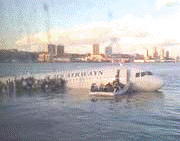Bird Strike Committee Proceedings

Bird Strike Committee-USA/Canada Joint Annual Meeting: 10th (2008)
Date of this Version
8-2008
Document Type
Article
Abstract
Vultures represent a serious hazard to military and civilian aircraft throughout much of the USA. According to the Breeding Bird Survey, populations of black vultures (Coragyps atratus) and turkey vultures (Cathartes aura) in South Carolina are growing exponentially. Safety concerns in light of burgeoning vulture populations prompted the initiation of a 2-year study of vulture movements and activities at the Marine Corps Air Station (MCAS) in Beaufort, SC. We trapped and outfitted turkey vultures and black vultures with solar powered GPS satellite transmitters. Each hour the location, altitude, and speed of each transmittered bird were recorded. We compiled and analyzed this information to determine daily and seasonal altitudinal patterns of each species, to identify major roost sites, and to assess potential hazards posed by vultures to air traffic at MCAS. Here, we report data from 8 black vultures followed for a mean of 12 months and 7 turkey vultures followed for a mean of almost 14 months.


Comments
Abstract of paper presented at Bird Strike Committee USA/Canada Meeting, Lake Mary and Sanford, Florida, August 18–21, 2008.